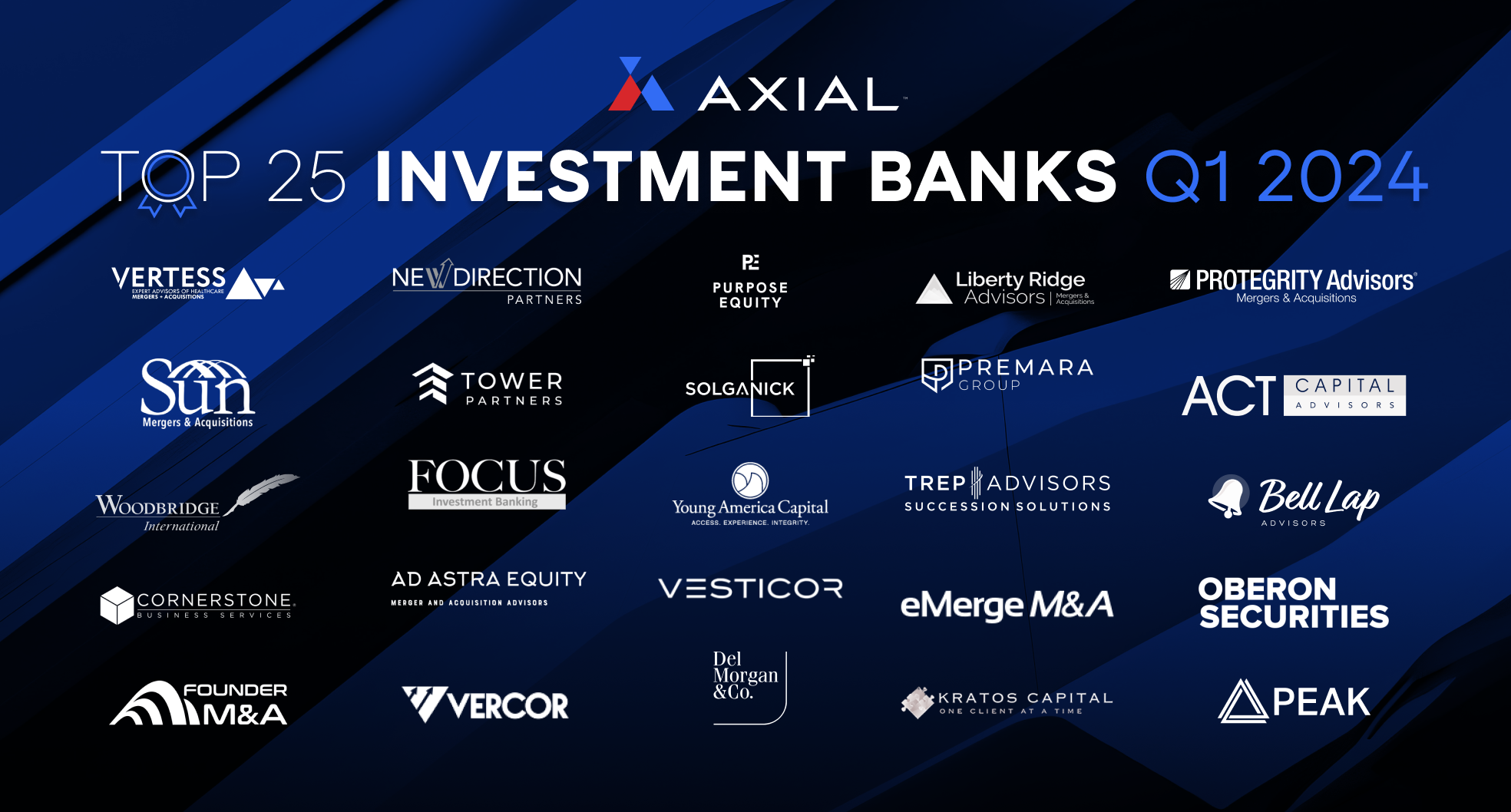
Top 25 Lower Middle Market Investment Banks | Q1 2024
Axial is excited to release our Q1 2024 Lower Middle Market Investment Banking League Tables. To assemble this list, we…
Every M&A advisor has encountered skepticism and reluctance from CEOs who know they need help during a transaction, but don’t want to pay for it.
Once a CEO is close to signing an engagement letter with you, it can be tempting to try to iron out a fee arrangement immediately. “The tendency is to get wrapped up in terms and the formula for your success fee,” says Tom Schramski, president of healthcare M&A advisory firm VERTESS. “It’s natural that you want to go there, but that’s not where you should start.”
It is important for both parties to buy into the relationship, but jumping straight to negotiations may not serve you well.
Instead, “make sure you understand what people are trying to accomplish with a deal, on both a personal and professional level. What’s your objective for raising capital or selling? If somebody is wishy-washy or says they’re not sure, that’s the part you have to take care of first,” says Schramski.
Otherwise, it can be hard if not impossible to get someone over the line of a deal. “Most transactions are difficult — they’re not catastrophic, but they’re difficult. Particularly when exiting, people are going through the emotional process of selling their baby. You need to understand what their objectives are” before they engage your services — and definitely before they sign a deal, says Schramski.
Think about how many times a CEO will be approached by a private equity firm or investment bank during the lifecycle of the company. How will you differentiate yourself from the dozens or hundreds of other advisory groups they’ve talked to? Expressing genuine interest and exemplifying strong listening skills will help build a relationship for the long-term. Before a CEO irons out the details of an exclusive engagement, be sure that they feel 100% confident about the value you can bring. CEOs will pay to work with an advisor they trust without reservation.
Changing Your Mindset
Rather than thinking primarily about your own sales cycle, take a longer view. Credibility is built over time; the last thing you want is for CEOs to discredit you as too pushy.
As an advisor, understanding more about the CEO’s motivations is crucial to shepherding a successful deal to completion and, ultimately, ensuring a happy client. For example, determine the answers to questions like:
As you get to know a CEO, look out for signs of Role Identity Fusion (RIF). As researcher Allie Harding of Orange Kiwi describes, “RIF is the concept of an entrepreneur’s identity as a business owner impinging on their self-identity in their social (non-business owner) roles.”
Harding writes that for advisors, identifying a CEO’s level of RIF early on in the exit process (what she refers to as the “exploratory” stage) is crucial. “Most advisors’ work is focused on the [later] strategic or execution phases because that is where their skill set and economic incentive is appropriately focused. But… owners that engage in a robust exploratory process are more likely to exit successfully.”
By changing the paradigm and focusing first on an owner’s needs, you can better communicate how you’ll add value to the transaction process and build trust.
